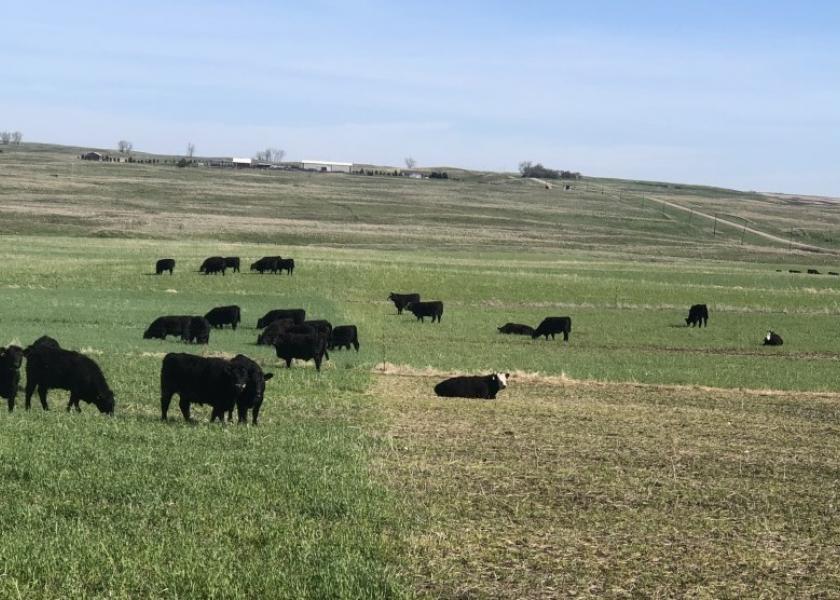Winter Cereals an Option for Adding Forage in 2022

The drought of 2021 left many ranchers short of feed, both grazing forage and hay. A great option for spring grazing or hay production is winter cereals.
“Establishing a winter cereal for grazing next spring will allow producers to delay pasture turnout, giving drought-stressed pastures more time to recover,” says Miranda Meehan, North Dakota State University Extension livestock environmental stewardship specialist. “Many pastures were overgrazed due to decreased forage production this year, and producers may see delayed growth and decreased production in 2022.”
Winter cereals are planted in the fall. Much of the Northern Plains finally received some needed rain in August and early September, providing an opportunity for growing winter cereals.
“Winter cereals can be planted anytime in September, with early- to mid-September recommended,” says Kevin Sedivec, NDSU Extension rangeland management specialist “There are three winter cereal options for grazing and haying that fit well in North Dakota; including winter rye, triticale and wheat. The seeding rate for all three types is 90 pounds per acre.”
Sedivec says there are a few questions to consider when selecting a winter cereal to plant. Do you plan to graze it early next spring or harvest it for hay? Do you want to plant a cash crop afterward or a crop for forage?
Winter Rye
Winter rye fits best if you plan to graze in May. It is the most aggressive growing winter cereal in May, providing the greatest economic return to the livestock. Seed costs will be around $22 to $27 per acre, with forage ready for grazing between May 5 to 10.
Rye achieves 80% to 90% of its growth by early June and is recommended to be harvested for hay in early June. Livestock do not like to forage on rye once it produces seed heads.
Winter rye also reaches the recommended harvest time for hay or silage by June 3 to 10. Rye also is a great option for seeding soybeans into after grazing or haying. Planting a forage crop like foxtail millet, sorghum-sudan, sudangrass or a full-season cover crop also is a great option. Rye does use a lot of water to grow, so if seeding a cash crop or forage crop following winter rye spring moisture will be critical.
Winter Triticale
Winter triticale also is a good fit for grazing in May. It is a little slower to grow in the first half of May compared to rye and matures about three to five days after rye. Triticale will have a higher protein and total digestible nutrient (TDN) value than rye, but also costs around $33 to $37 per acre for seed. Triticale is usually ready to be harvested for hay by early- to mid-June.
Triticale regrows better than rye, so if spring moisture is good a second crop can be harvested for hay or grazed, usually about 50% of the first harvest. A second forage crop often is planted after grazing or haying triticale with crops such as foxtail millet, sorghum-sudan, sudangrass or a full-season cover crop.
Winter Wheat (forage varieties)
“Winter wheat would not be recommended for May grazing, as it grows much slower than rye and triticale,” says Zachary Carlson, NDSU Extension beef cattle specialist. “The forage winter wheats are best suited for hay production, as it is ready for hay harvest in late June.”
Winter wheat is the lowest in lignin content, thus more palatable to livestock, and highest in crude protein and TDN compared to both rye and triticale. Seed costs will be around $29 to $32 per acre.
A second forage crop often is planted after harvesting winter wheat with crops such as foxtail millet, sorghum-sudan, sudangrass or a full-season cover crop.
For more information on selecting annual forages, visit: Annual Cover Crop Options for Grazing and Haying in the Northern Plains.







